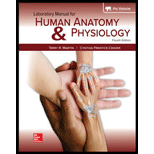
Match the terms in column A with the descriptions in column B. Place the letter of your choice in the space provided.
Column A Column B
a. Bony labyrnith ______ 1. Auditoryossicle attached to tympanic membrane
b. Cochlear duct ______ 2. Air-filled space containing auditory ossicleswithin middle ear
c. External acoustic meatus ______ 3. Contacts hairs of hearing receptors
d. Malleus ______ 4. Leads from oval window to apex of cochlea and contains perilymph
e. Membranous Iabyrinth _____ 5. S-shaped tube leading to tympanic membrane
f. Pharyngotvmpanic (auditory) tube ______ 6. Tube within cochlea containing spiral organ and endolymph
g. Scalatympani ______ 7. Cone-shaped, semitransparent membrane attached to malleus
h. Scalavestibuli ______ 8. Auditoryossicle attached to oval window
i. Stapes ______ 9. Chambers containingendolymphwithin bony labynith
j. Tectorial membrane 10. Bony chambers of inner ear in temporal bone
k. Tympanic cavity ______ 11. Connects middle ear and pharynx
L Tympanic membrane (eardrum) _____ 12. Extends from apex of cochlea to round window and contains peerilymph
Want to see the full answer?
Check out a sample textbook solution
Chapter 37 Solutions
Laboratory Manual For Human Anatomy & Physiology
- MEDICAL TERMMAIN ENTRY (pronunciation) MEANING (definition) 1. astigmatism 2. blepharitis 3. conjunctiva 4. glaucoma 5. ophthalmology 6. ophthalmologist 7. cochlear 8. myringotomy 9. otolaryngology |10.otolaryngologistarrow_forwardA - If only the first statement is correct. B - If only the second statement is correct. C - If both statements are correct. D - If both statements are incorrect. 1. A. The pupil is transparent but appears to be black because of the melanin found in the choroid. B. The pupil constricts and relaxes as it controls the amount of light that passes through.arrow_forwardbreath sounds assessment Resonance is ______________________ and is heard where_______________. 1- Lung sounds/thorax characteristics 2- Describe sound/ assessment findings 3-When and where heard Associated Conditions Fine crackles Course crackles Wheeze ( sibilant) Wheeze (sonorous) Kussmaul Cheyne-stokes Friction rub Dyspena Tactile fremitus crepitus Ataxic Resonance Bronchial Vesicular Bradypnea Tachypnea Please do not plarized no hand written thank youarrow_forward
- Title What technique error will always be present on an occlusal radiograph using size 4 film? a. Cone-cut Description What technique error will always be present on an occlusal radiograph using size 4 film? a. Cone-cut b . Elongation c. Foreshortening d . Overlapped contact areas What is the function of intensifying screens used in extraoral radiography? a. To increase the sharpness of the image b . To decrease the magnification of the image c. To help the patient remain still during the exposure d . To decrease the exposure to radiation for the patientarrow_forward"The person in the figure complains about lack of sensation in the thumb of the right hand. If the cause is related with nervous injury, which would be the injured nerve?" Copyright © The McGraw-HI Companies, Inc. Permission required for reproduction or display C6- C8 CS O C2 O C6 OT2 OT12 OL1 17 T10 T11 T12 L1 Cervical nerves Thoracic nerves Lumbar nerves Sacral nervesarrow_forwardPart B Rewrite each statement using medical terminology. The first one has been completed for you. Highlight your answers in yellow. 8. Pain is located in the right palm and extends into both the pinky and index finger. ANSWER: Pain is located in the right palmar and extends into the medial digital region. 9. The patient fell and attempted to stop the fall with the right hand. Patient is now experiencing pain in the right wrist that extends up the right forearm to the elbow. 10. Patient has a headache with throbbing pain in the forehead, in between the eyes extending sideward and down on both temple. 11. Patient has a cut on the left leg that starts at the knee, moves over the thigh, and ends at the left hip bone. 12. Patient is complaining of pain in the lower back that shoots down the back of both legs to the back of the knee when bending over. 13. The patient landed on the left shoulder and has pain under the left shoulder blade that shoots into the neck and upper part of the spine.…arrow_forward
- The nose is located ________________ and ________________ to the ears.arrow_forwardMEDICAL TERM MAIN ENTRY (pronunciation) MEANING (definition) 1. astigmatism |2. blepharitis 3. conjunctiva |4. glaucoma 5. ophthalmology 6. ophthalmologist 7. cochlear 8. myringotomy 9. otolaryngology 10.otolaryngologistarrow_forwardWrite the letter of your choice based on the choices in the box below. A. if only the first statement is correct B. if only the second statement is correct C. if both statments are correct D. if both the statements are incorrect 10. A. The pupil id transparent but appears to be black because of the melanin found in the choroid. B. The pupil constricts and relaxes as it controls the amount of light that passes through.arrow_forward
- Basic Clinical Lab Competencies for Respiratory C...NursingISBN:9781285244662Author:WhitePublisher:Cengage
 Medical Terminology for Health Professions, Spira...Health & NutritionISBN:9781305634350Author:Ann Ehrlich, Carol L. Schroeder, Laura Ehrlich, Katrina A. SchroederPublisher:Cengage Learning
Medical Terminology for Health Professions, Spira...Health & NutritionISBN:9781305634350Author:Ann Ehrlich, Carol L. Schroeder, Laura Ehrlich, Katrina A. SchroederPublisher:Cengage Learning


